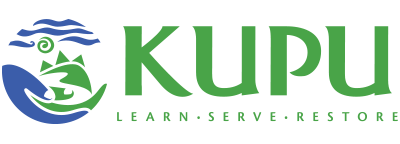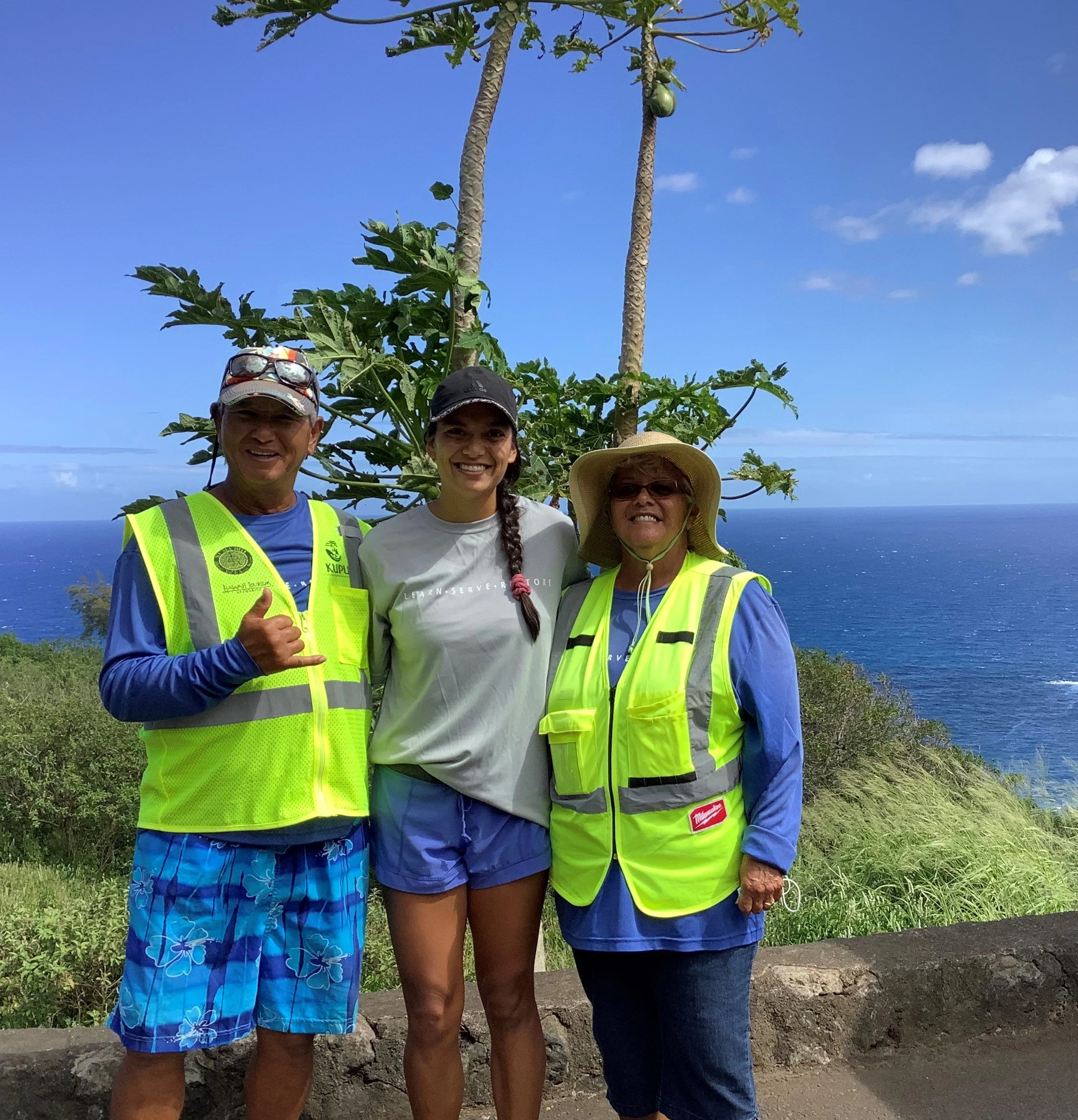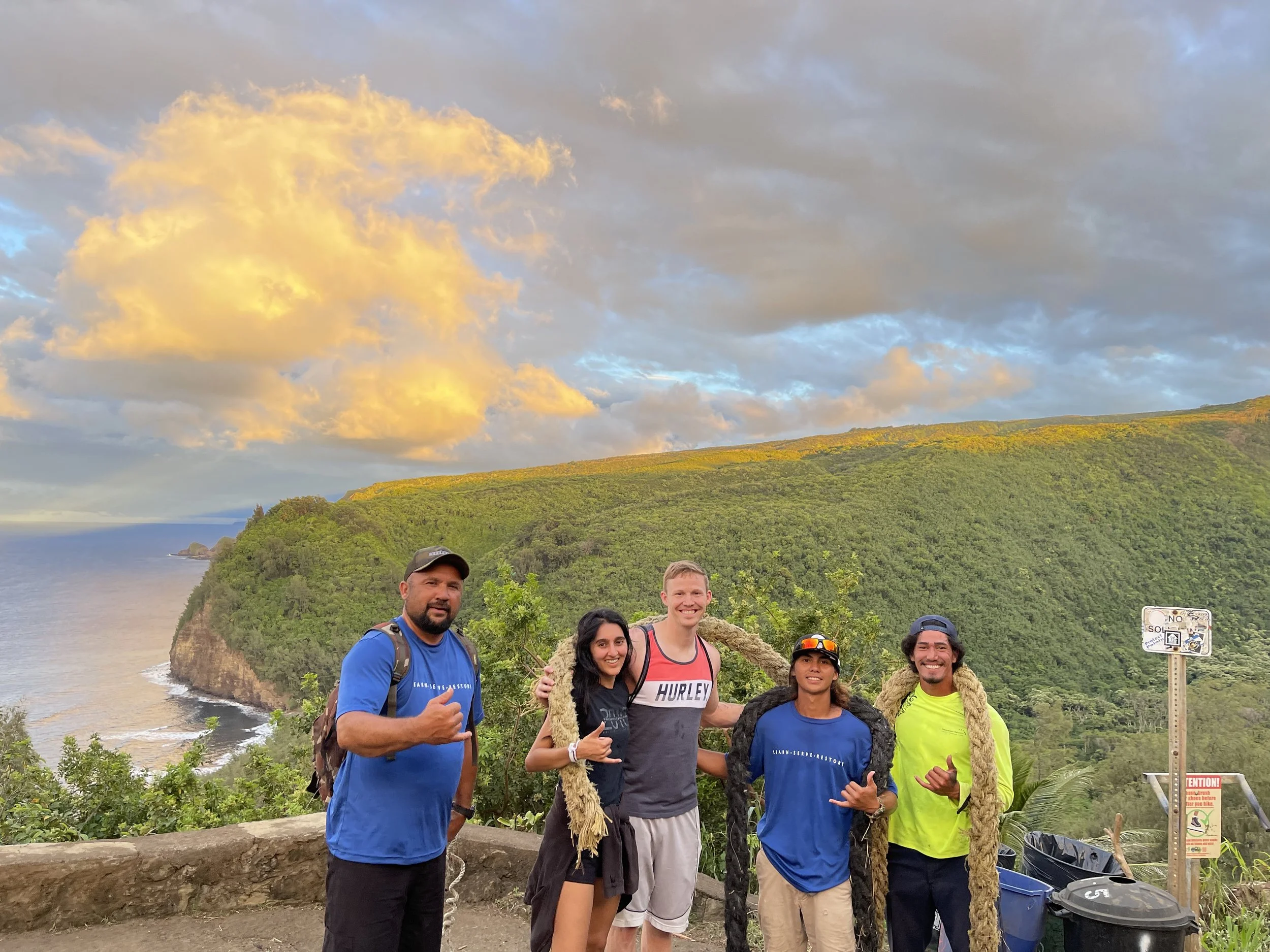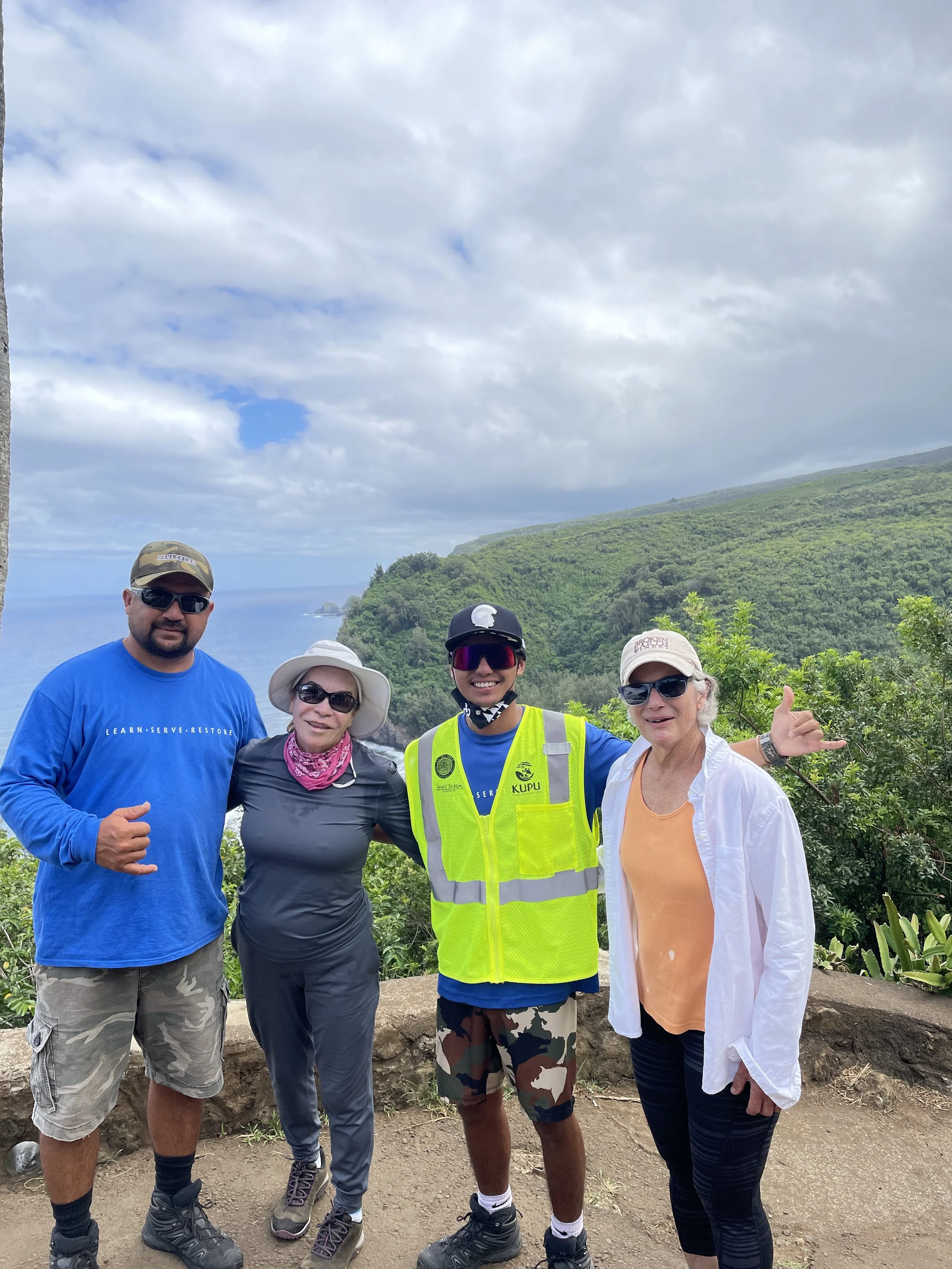
Nā Manu ‘Elele
Nā Manu ʻElele, also known as the Hawaiʻi Land Steward Program, is a collaborative project between Kupu and the State of Hawaiʻi’s Department of Land and Natural Resources (DLNR).
In traditional Hawaiian context, birds (nā manu) represent messengers, guardians, and beings of a particular place. ʻElele is a Hawaiian term that refers to individuals who act as ambassadors. The primary goal of the Nā Manu ʻElele Land Steward Program is to embody that philosophy and to provide temporary work and training opportunities utilizing local “stewards” to assist in interpreting the historic nature, natural history, safety concerns of sensitive natural areas as well as mitigate unwanted behaviors and ensure safety. This program empowers local communities to manage and mitigate high visitor use in sensitive heritage areas within their sense of place.
Currently seeking applicants for Nā Manu ʻElele positions in…
Maui, Oʻahu, and Hawaiʻi Island
For positions on other islands, please reach out to stewards@kupuhawaii.org for more information!
“A lot of people come to us and ask for information. And after I explain, a lot of them are glad. They’re like, ‘Thank you so much for letting us know that; I didn’t know that before.” —Keoni Lorenzo, Trail Steward
-
The program will take place on the islands of Hawaiʻi, Maui, Oʻahu, and Kauaʻi. A total of twenty-four stewards will be placed across these sites in part-time or full-time positions.
Application Deadline: Applications accepted year-round
Position Description: Na Manu Elele Position Description
Benefits:
$18/hr wage paid biweekly
Paid time off
Health coverage (eligible if working 20+ hrs/week for 4 consecutive weeks)
Requirements:
Applicants must be over the age of 17
Applicants must be a US Citizen, US National, US Permanent Resident, or otherwise legally allowed to work in the United States.
Applicants must be responsible for their own personal housing and transportation arrangements on-island.
-
Hawaiʻi
Miloliʻi CBFSA
Onomea Trail
Pololū Trail
Puna Trail
Various Nā Ala Hele Trails
Kauaʻi
Hāʻena CBFSA
Haleleʻa FR
Hono O Nā Pali NARS
Kawaiʻele Mānā Wildlife Sanctuary
Kuia NARS
Līhuʻe-Kōloa FR
Nā Pali-Kona FR
Nounou FR
Puʻu ka Pele FR
Various Nā Ala Hele Trails
Oʻahu
East Oʻahu Trails
Kaʻena Point State Park
Kaʻiwa Ridge Trail
Kāne’ohe Bay
Lulumahu Falls
Makiki/Tantalus
Mānoa
Maunawili Trail
Moanalua
Various Nā Ala Hele Trails
Maui
ʻĀhihi-Kinaʻu NAR
Kahakapao Recreational Area
Keʻanae Arboretum
Kīpahulu CBFSA
Makawao FR
Waiheʻe Ridge Trail
Various Nā Ala Hele Trails
Molokaʻi
Various Forest Reserves and Hunting Units
-
In 2021, the Pololū Trail Steward program was launched. This program was a collaborative project with the Hawaiʻi Tourism Authority, Kupu, Nā Ala Hele Trails and Access Program, and the lineal descendent community of Pololū, Makanikahiō and neighboring ahupuaʻa. Due to the rapid increase of visitors to the Pololū Lookout, Trail, and coastal shoreline, there was a growing need to mitigate the impacts to the community. Often, visitors were simply unaware of the sensitivities, dangers, and environmental requirements of the area. Therefore, the aim of the pilot project was to utilize local “stewards” (four part-time positions) to assist in interpreting the historic nature of the area as well as mitigate unwanted behaviors and ensure safety.
Following the success of the Pololū program, DLNR recognized the need for stewards across the state.
If you have further questions about this program, please contact stewards@kupuhawaii.org.
Nā Manu ʻElele is an initiative resulting from fund made accessible from the U.S. Economic Development Administration. Mahalo to our partners for providing the funding to make this program possible.
This program is in collaboration with the Department of Land and Natural Resources.






